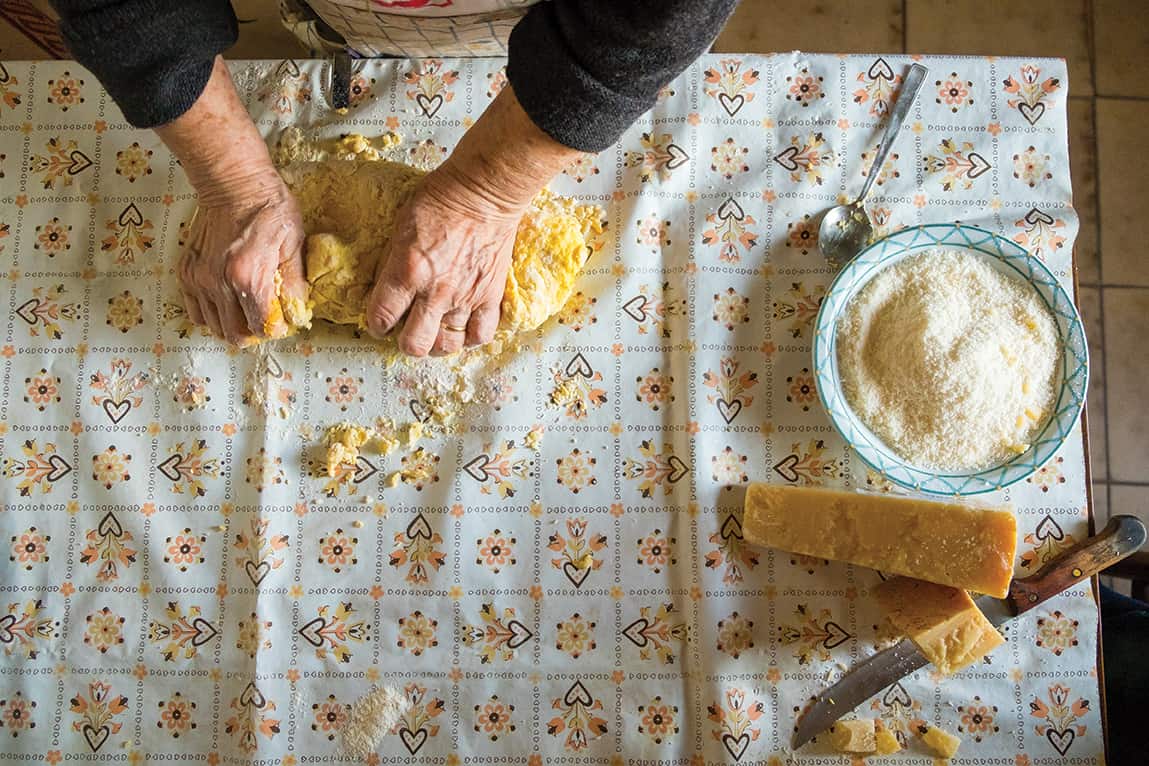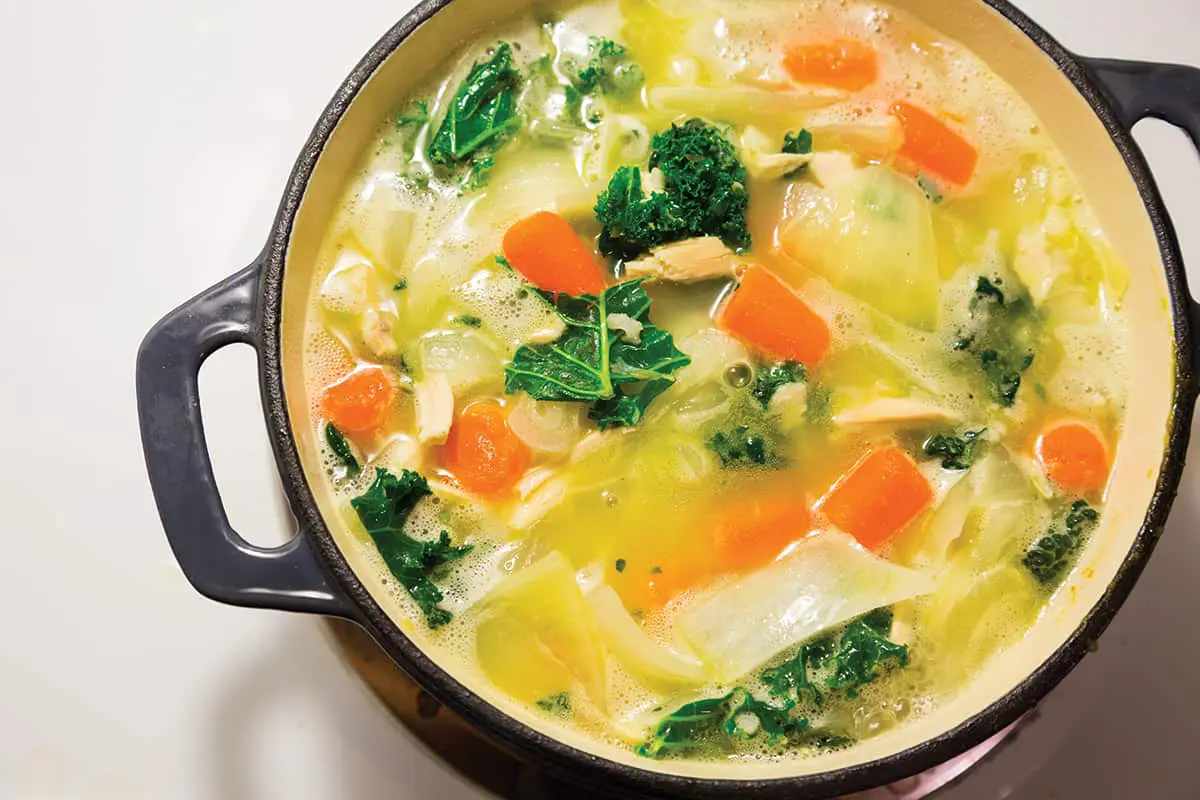By Christina Shepherd McGuire
—
Time. We never have enough of it. And as life’s complexities demand more and more from us, our time continuously gets crunched.
Take technology, for instance. The uber-connectedness of at-your-finger-tips information was developed to make things easier. It takes less time to look up a phone number, get directions, and plan your next meal with on-the-spot recipes, complete with grocery lists. So why is it that our margin of free time—time to take care of our family and revel in the hobbies that fill us up—seems to shrink?
It never used to be that way. For instance, I can’t recall a day when both of my grandmothers weren’t cooking. We never went out to eat when we visited their homes (in fact I don’t even remember a favorite restaurant nearby). Food was continuously cooking on the stovetop, or something miraculously just popped out of the oven. I took for granted the food-on-demand type of childhood I had. But I also never realized that my grandmothers—and my mother—had, took, and made time to cook, and really enjoyed the art of doing so, too.
There are some tips I’ve adopted from my grandmothers’ kitchens that, if I actually “had the time,” I could certainly incorporate into our weeknight meals. Instead, I squeeze them in on weekends and around the holidays, in an effort to have homemade food a few nights a week.
Many of the techniques my grandmothers used were developed out of frugalness. Like one whole chicken became a meal, then a soup, and then the organs were cooked and eaten as “healthy snacks.” (Me and my cousins would cringe at the thought.) Neither of my grandmothers ever complained about the time it took to cook something from scratch, with hand-me-down recipes stored in the Rolodex of their brains. In fact, it was their priority. As I make it mine too, I realize it’s not just about the old-school techniques, but it’s more of a mindset, as the practices themselves work their way into every part of my relationship with food. Often, these procedures provide flavorful additions to my meal, but also they allow me to cut my spending while promoting healthy habits that I will pass down to the next generation. Because (shh, don’t tell anyone), I actually eat organ meat now, too.
1. Save Everything!
The butt end of the cabbage, Parmesan cheese rinds, onion skins, and, of course, chicken and beef bones were always collected in a container by my maternal grandmother and frozen for later use. Come soup-making time, she would open the freezer and dump everything into a large Dutch oven, fill it with water and simmer it until the broth was ready to be strained and used.
Similarly, in our home, a meal of roasted chicken becomes quesadillas the next night. And then I bag the carcass and any leftover meat on the bones and freeze it. I usually have several chicken carcasses in the freezer to pull out on the weekend, add veggies, and make my own stock or bone broth for the soup of the week.
2. Always Cook with FULL FAT
Margarine only made a brief appearance in my 1970s upbringing. Instead, olive oil and butter (okay, sometimes Crisco) were always the base for sautéing or baking, or they were used as a topping for bread or pasta. Fat just makes everything taste better. And, contrary to popular belief, eating fat can actually help you loose it. Fat fills you up, keeps you satiated longer, and, when eaten first thing in the morning, jumpstarts your metabolism to burn fuel all day long.
I think my husband, Justin, learned this tactic from his grandma, too. As our family’s weekend breakfast chef, he saves and freezes the bacon grease (we have cans of it) and then breaks it out to use as a base for sautéing onions, garlic, and ground beef for taco night. I use it for Brussel sprouts—roasted or pan-fried. The grease serves the dual purpose of waterproofing our leather items, too. Justin’s insulated Kincos gloves last him all winter long with a slathering of grease on the palms (the smell on the chairlift makes us all hungry). Additionally, I never buy reduced-fat milk or yogurt. It just doesn’t taste the same.
3. Reserve the Pasta Water
Growing up in an Italian household, this was a big one. In fact, Cooking Light calls it a “culinary crime” to pour what some chefs consider “liquid gold” down the drain. And then rinsing your pasta afterwards? Boy—that’s ground for calling in the kitchen cops. You see, pasta made from semolina flour releases starch into the water that can be used to emulsify and thicken any favorite sauce. Toss your pasta with pesto and ¼ cup of pasta water, or stir it into your marinara sauce. In one of my favorite Giada DeLaurentiis recipes, the pasta water actually becomes the sauce for the pasta itself, tossed with lemon juice and zest, olive oil, sautéed garlic, shaved Parmesan, and wilted arugula. That’s it. But don’t forget the water! Freeze pasta water in ice cube trays and add it to beans, stews, and soups, too.
4. Don’t Toss Past-Prime Produce
This one, for sure, comes straight from the “waste not, want not” mindset. In an effort to be frugal, my paternal grandma creatively revived wilted greens and shriveled fruit into edible and sometimes delectable dishes. Now I’m not saying to eat your fruit, mold and all (although a little mold scared no one back in the day), but mushy berries can be frozen and added to smoothies or blended with honey and rendered into a refrigerator jam. Chop wilted kale, cabbage, or another leafy green and toss them into a chicken or Italian wedding soup to add extra color and vitamins. Of course, old tomatoes can be trimmed of their bruises and added to a saucepan with some garlic and basil for a pasta sauce that rivals anything you’d get in a jar. Freeze grapes and eat them as snacks or toss them in drinks. And zest mushy citrus fruit to add pizazz to future baked items like sweet breads or cookies (just freeze the zest).
5. Brine Your Meat
Every wonder how grandma’s Thanksgiving turkey came out so juicy? Well, she dunked it into a salty mixture of seasoned water before cooking it, of course. Admittedly, I’m a little new to the whole brining thing, but I was inspired by a local rancher to try it. Now, in addition to always buying meat on the bone (it tastes better and is better for you), I also quarter whole chickens and dunk them in a pot of salted water and herbs for about eight hours before grilling or roasting them.
For the recipe, I use ½ cup of Himalayan sea salt and a bundle of fresh herbs, like thyme or parsley. To brine, dissolve the salt in hot tap water in the bottom of a soup pot (you can boil it on the stove, too, then cool). Once dissolved, add cold water, bone-in chicken or pork, and herbs of your liking. Then cover it and chill it in the fridge for a minimum of two hours (and up to 24)—the longer you go, the juicier the meat. Remove the meat from the brine, pat it dry, and cook it as you would for a mouthwatering main. I’m totally sold on brining now, almost in lieu of using a marinade!
6. Make a Big Batch
This tradition almost goes without saying. Most families I know have a favorite food item that they batch cook or process when it’s in season. Maybe for you it’s peaches for jam or pie filling. Maybe it’s canned tomatoes that get you through the produce-less winter. Or if you are a baker, I bet you enjoy making big batches of holiday cookies to freeze or to give as gifts. To me, batch cooking is an adopted technique that serves much more than one purpose. Batch cooking saves money, it saves time (yeah, remember that “time” thing?), and it’s a great way to instill a family tradition by getting everyone involved in the making. I hope my children always remember canning my classic Fresca pasta sauce each fall (a recipe I learned from my mother, passed down from her mother). And the Italian pizzelles we make at Christmas, well, my father’s mother would be proud. To my kids—who eat them for breakfast, lunch, and dinner—no other Christmas cookie come close.



